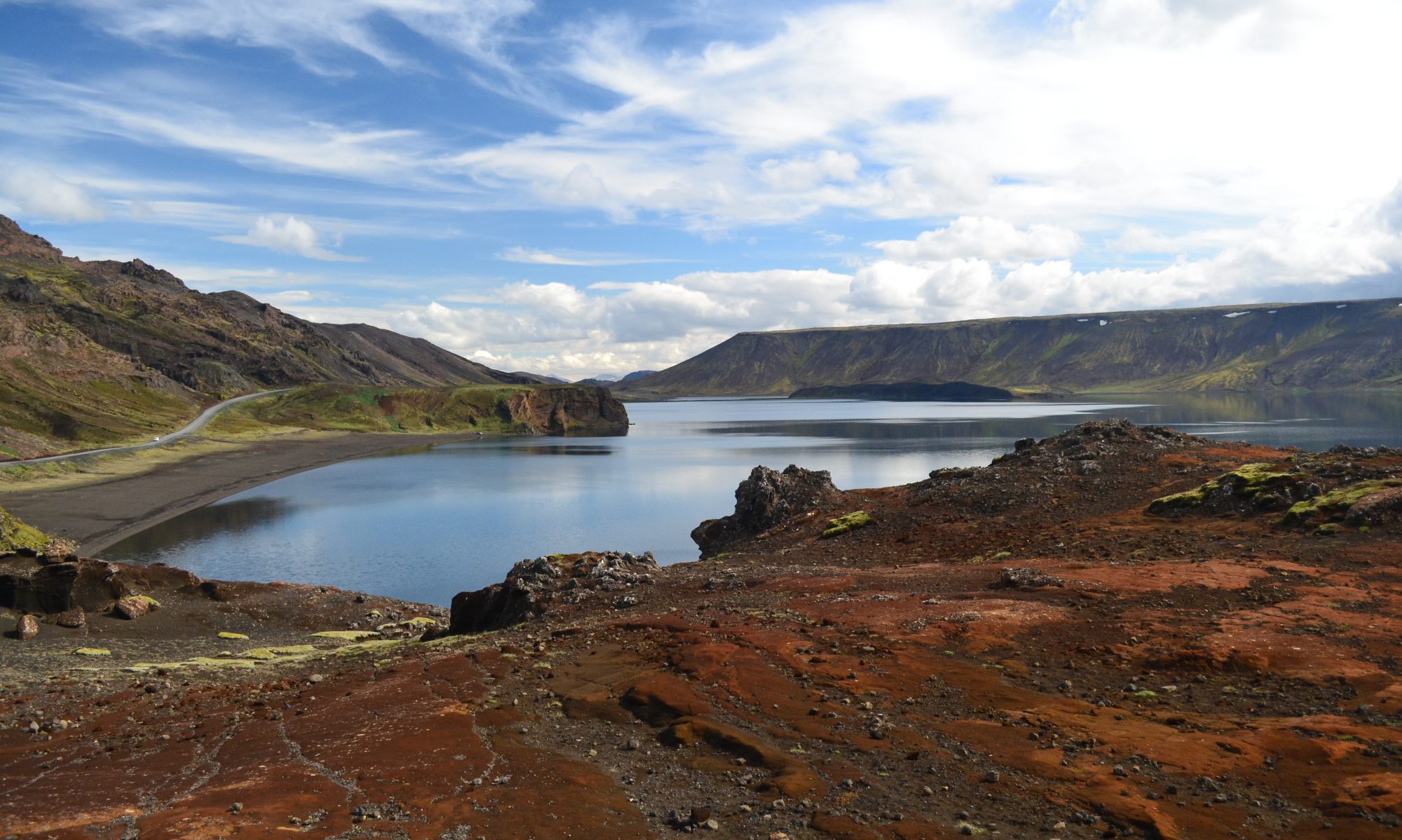Today we got some much needed time to rest and recuperate back at the hostel after camping at the Hotel Husafell campgrounds. Our stream crew sampled four lakes during this three day/ two night outing, including one experiencing bottom drainage, one fed by glacial runoff from Langjokull, a shallow system near Reydarvatn, and a long and thin tectonic lake. Our major achievement was getting not one, but two successful sediment cores! We fought strong winds and swarms of flies to core the lake and extract the sediment for over an hour each time. This will help us to better understand the past condition of these lakes and to see how they have changed over time in temperature and composition. Ridge and stream work was capped off each day with time around the instant grill singing songs about geology and limnology, roasting marshmallows, and telling plenty of scary ghost stories.

We also looked at Ok, a large shield volcano that once had a glacier on top, but has since melted. Don’t worry though, it hasn’t erupted since the Pleistoscene era and is inactive now. In that area, we hiked down a ridge to find our glacial input lake off a steep cliff. It was bright turquoise and stretched along the base of a tuya, or flat-topped volcano. It was also very, very cold! After that, the whole group drove up to and walked on the second largest glacier in Iceland, known as Langjokull, which is Icelandic for “long glacier.” We brought the Dickinson flag along for the photo shoot of course, to fly high in the snow. We definitely felt like we had conquered Iceland. Now it’s time to sit back, relax, and enjoy our day off. Ya know, the Viking Festival started today… I know what I’m doing this afternoon.








